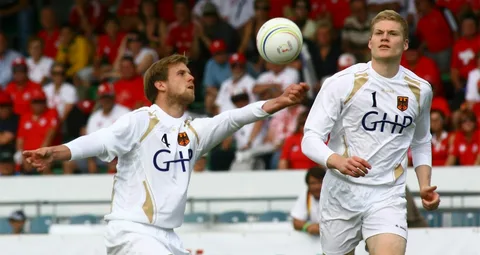Fistball in Germany has transformed from an amateur sport into a promising business model in recent years, demonstrating a unique example of successful commercialization of a niche sport discipline. The economy of German fistball is based on three key areas: the organization of professional leagues and tournaments, the production of specialized equipment and the development of sports marketing. Professional clubs build their economies on several sources of income, including sponsorship contracts, media rights sales, merchandising and ticket programs. A special feature of the German approach is the franchising system, where new teams buy licenses to participate in leagues, which creates a stable financial flow for organizers. Production of equipment for fastball has become a separate profitable industry – German companies develop specialized balls with improved aerodynamics, ergonomic gloves and protective equipment, exporting products to other countries.
The media component of the business includes television broadcasts of major league matches, production of digital content for social networks and mobile applications with player statistics. German marketers have successfully positioned fastball as a dynamic and entertaining sport that appeals to a young audience, which makes it interesting for advertisers. Corporate partnerships are realized through naming rights (naming rights for stadiums and tournaments), branded content and integration of products into sporting events. A separate area of commercialization has become franchise schools of fastball, where young players are trained according to a single methodology, combining the educational function with profitable business.
The tournament business includes not only professional competitions, but also mass amateur tournaments with entry fees, which have become a popular format for corporate events. German sports facility operators have developed modular fastball courts that can be quickly installed in shopping centers or city squares for exhibition matches and promotional events. The sports hospitality industry offers package deals for fans including tickets, transportation and accommodation. Fistball clubs are actively developing loyalty programs with club cards giving discounts on merchandise and additional services.
The financial model of professional clubs is based on strict cost control and income diversification, which distinguishes the German approach from more risky models in other countries. A key success factor has been the salary cap system, which prevents financial imbalances between teams. Youth academies at clubs not only train the reserve, but also generate income from transfers of promising players. Digitalization of business processes – from online ticket sales to virtual advertising platforms on digital boards during broadcasts – has become an innovative trend.
Business strategies in fastball take into account the regional peculiarities of Germany – each region develops specific marketing programs that take into account local traditions and demographics. Social responsibility of business is manifested in programs to support children’s sports and adaptive versions of the game for people with disabilities, which at the same time improves the image of brands. Investments in infrastructure include not only the construction of specialized arenas, but also the creation of training centers with commercial services for amateurs. Analysts predict further growth in the fastball economy through the development of sports technology, including video analysis systems and wearable gadgets for players.
The German model for the commercialization of fastball demonstrates how a niche sport can create a sustainable ecosystem of professional clubs, equipment manufacturers, media and advertising agencies. The balancing act between commercial interests and keeping the sport accessible to the masses has become a peculiarity of this market. Fistball in Germany continues to develop as a promising business platform that attracts investment and offers new formats for monetizing sports content. The success of this model is based on a systematic approach where sporting performance is inextricably linked to economic efficiency, setting an example for the commercialization of other emerging sports.
